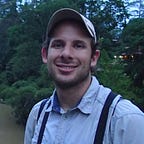‘Problem Individual’: A Bear-y Misleading Term
By Madison Rodriguez
In the midst of growing numbers of wildlife habitats coinciding with areas used by humans, conflicts between humans and wildlife pose a threat to our successful coexistence. This threat is evident as wild animals are often responsible for damages to human-use areas, or places such as farms, wild fisheries, or apiaries (where bees are raised). This has led to certain damage-making wildlife species being known as ‘problem individuals’.
You may be wondering: what’s the big deal with using this term when they are causing us problems? Well, despite the acceptance of certain wildlife species as ‘problem individuals’, there is little evidence into how behavioral differences among species are related specifically to human-wildlife conflicts. This affects how the public and policy makers view ‘problem’ wildlife and puts them at increased risk of being killed or removed from their habitats due to injuries from conflicts or certain lethal control programs.
Who Exactly is the ‘Problem’?
The term ‘problem individual’ was first used for large carnivores because they produce the most economic and emotional loss to human-use areas. In particular, bears are seen as ‘problem individuals’ because their diet takes advantage of whatever is around them. This includes foods that are typically human resources such as livestock, honey bees, and crops. Their tendency to forage on human food leads to many instances of bears damaging human-use areas. However, not every bear is the same–like any animal their behaviors can differ in many ways. Some may be extreme risk takers and have no problem with foraging in human-use areas. Some may have unique ways of foraging or even specific dietary preferences. Due to these possible behavioral differences, it can be inaccurate to classify all bears as ‘problem individuals’.
Investigating this Unbearable Reputation
So, how do we prove if it’s unfair to call bears ‘problem individuals’? To answer this question, researchers from the Institute of Nature Conservation in Poland conducted a study in the Podkarpackie Province of Poland, where they investigated a population of brown bears in the eastern part of the Carpathian Mountains (Berezowska‐Cnota et al., 2023). Here, the researchers inspected areas damaged by bears between 2014 and 2017. At each damage site they collected identifiable materials that were left behind by the bears, such as feces or hair. They then used these materials to genetically identify individual bears and calculate the fraction of them that could be considered ‘damage-makers’ out of the entire estimated population of brown bears in the area.
What did they find?
Throughout the entire period of 2014 to 2017, the researchers identified a total of 209 incidents of damage done by bears. This means that there was an average of 52 instances of damage done by bears per year within the Podkarpackie Province. However, the number of damage events varied across the years, with as few as only 17 instances in 2015. Using the collected genetic materials from the damage sites researchers identified 23 individual bears that were damage-makers. With this, they could conclude that only one-third of the population of brown bears in this area (72 individuals) were damage-makers. Additionally, of these damage makers, the probability of being a repeat offender was only 33% and the probability that an individual bear in the population would do any damage overall was only 17%.
Therefore, the researchers successfully confirmed that brown bears do have differences in behaviors associated with human-wildlife conflicts. They also found that these differences do not show up in the population at the same level for each individual. This shows that the term ‘problem-individuals’ is in fact a misleading representation of the behavior of all bears in this area.
Implications for Conservation of Other Species
This research highlights the important role of animal individuality in human-wildlife conflicts.
Just like humans, every non-human animal has, in their own way, a behavioral ‘personality’ and will affect the environment differently. Therefore, it is harmful to use terms such as ‘problem individuals’ to describe entire species, as it can have negative consequences for their conservation.
One of the consequences is that ‘problem’ wildlife can be seen as not worthy of conserving because of the damage they do. However, the behavioral differences that lead animals to cause damage can be the exact reason they need support for conservation. For example, if animals that are risk-takers are more likely to get close to human-use areas, then they’re also more likely to get in conflicts that could possibly result in their death. Therefore, these ‘problem individuals’ actually have a higher need for conservation support, especially as loss of diversity can affect the entire population of a species. This is why it’s important to not neglect the worth of an individual animal simply because they engage in behaviors that are seen as problematic.
The continued overuse of this term is especially harmful if it gets to the point of solving conflicts through the killing of ‘problem’ wildlife, as the varying levels of behavior among a species make this solution not entirely effective. It can also lead to the development of negative attitudes towards wildlife in general because the public perception of a species is very important in terms of supporting its conservation. To continue to coexist with wildlife even despite instances of conflict, which are seemingly unavoidable in our humanized world, it’s important to continue to keep individuality a part of the conversation. This will ensure that we do not harm the treasured diversity we see in wild populations of animals that allows us to have a functioning ecosystem.
References
Berezowska‐Cnota, T., Konopiński, M. K., Bartoń, K., Bautista, C., Revilla, E., Naves, J., Biedrzycka, A., Fedyń, H., Fernández, N., Jastrzębski, T., Pirga, B., Viota, M., Wojtas, Z., & Selva, N. (2023). Individuality matters in human–wildlife conflicts: Patterns and fraction of damage‐making brown bears in the north‐eastern Carpathians. Journal of Applied Ecology, 60(6), 1127–1138. https://doi.org/10.1111/1365-2664.14388
